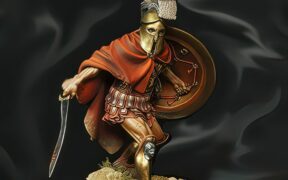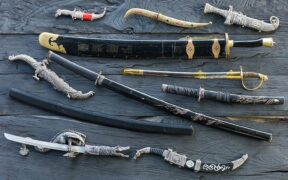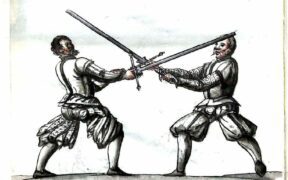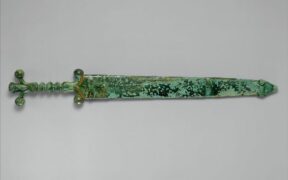Types of Korean Swords You Might Not Know About
NO AI USED This Article has been written and edited by our team with no help of the AI
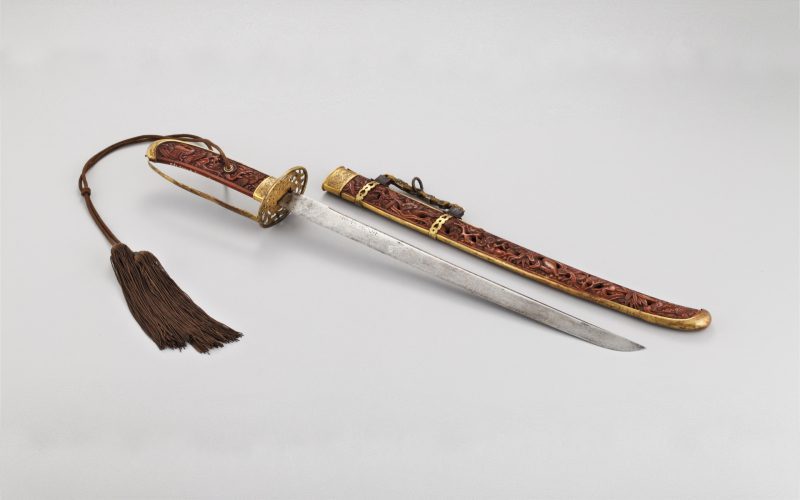
Korean swords have played significant roles in battles against invaders to preserve their nation’s independence. Influenced by neighboring China and Japan, their unique designs reflect their impeccable craftsmanship and historical significance.
This article explores the different types of Korean swords, their characteristics, and legacy.
1. Hwando (Military Sword)
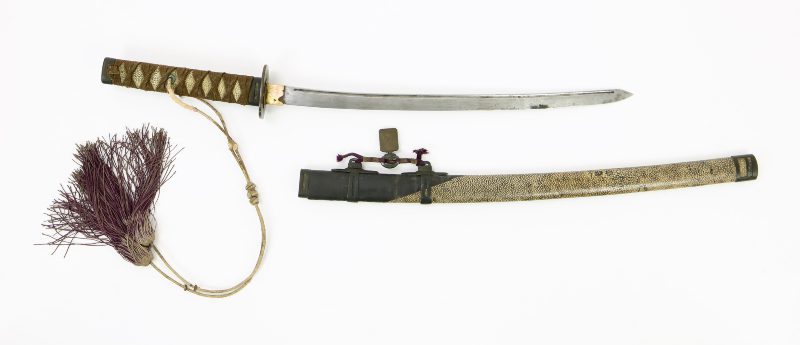
Named after the rings (hwan) on its scabbard for tying cords, the hwando (환도) was the standard military sword of the Joseon dynasty (1392–1910). Its lightweight design was ideal for soldiers burdened with heavy armor, bows, arrows, and shields, enhancing efficiency in battle.
Soldiers initially carried the sword suspended by a cord with a metal hanger, allowing them to easily discard the scabbard. Later, it was worn on a belt with a quick-release clip for faster detachment.
- Design: One-handed, single-edged, straight or slightly curved sword.
- Overall Length: ~40 inches (70 centimeters)
However, in sword typology, geom usually denotes a double-edged blade, while do refers to single-edged weapons, with some exceptions to this rule.
2. Ssang Soo Do (Long Sword)
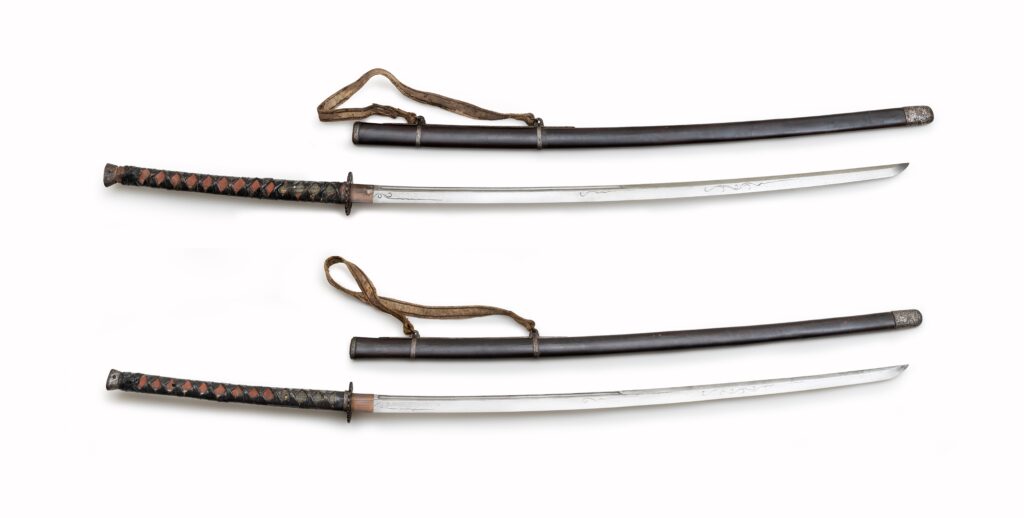
Originally called jangdo (장도), meaning long sword, the ssang soo do (쌍수도) is best represented by the two renowned swords of Korean admiral Yi Sun-shin. It is also known by other names such as pyung gum or yong gum.
Martial arts expert Jack Chen noted that Korea adopted these weapons from Ming Dynasty General Qi Jiguang, who incorporated Japanese swordsmanship into his troops’ training to combat Japanese pirates.
When the Ming dynasty aided Korea during the Japanese invasion, Qi’s methods were taught to Koreans and later documented in the Korean military text, Muye Dobo Tongji.
- Design: Long, two-handed sword
- Overall Length: Around 78 inches (197.5 centimeters)
3. Ingeom (Tiger Sword)
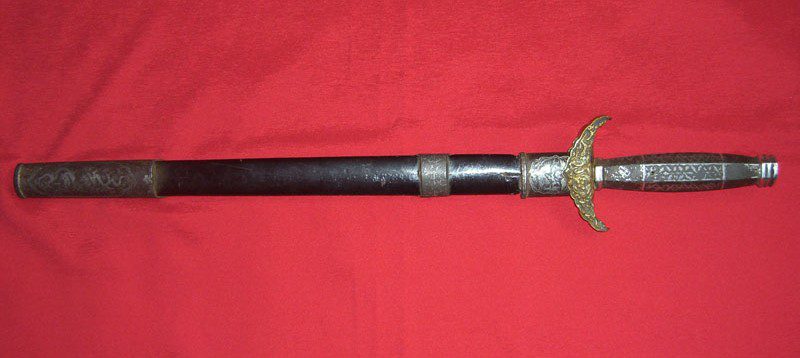
The term ingeom (인검) meaning “tiger sword” features the Korean tiger, a powerful symbol that wards off malevolent spirits and represents superiority. These swords were produced exclusively during the astronomical cycle of the tiger and crafted as talismanic objects, designed for rituals and ceremonial purposes rather than for battlefield use.
Some variations of the ingeom are listed below:
Saingeom (Four-Tiger Sword)

Saingeom (四寅 劍) or the “four-tiger sword” is forged when the year, month, day, and hour of the Tiger align. Regarded as the strongest spiritual weapon, swordsmith Lee Sang-seon noted that this highly valuable weapon was used by kings in shamanic rituals to slay demons.
Museum expert Choi Seonju explained that during the Joseon dynasty, the four-tiger sword embodied the authority of the royal family, symbolizing the tiger’s power.
Samingeom (Three-Tiger Sword)
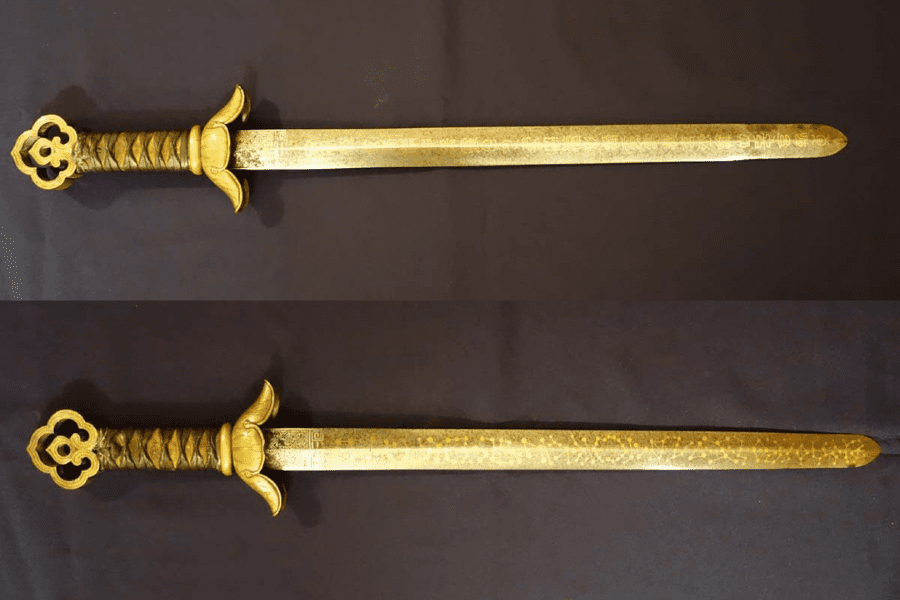
Similar to the four-tiger sword, the samingeom (三寅劍) or three-tiger sword is made during three of the four specified time of the tiger. The process of making three-tiger swords also involves the recitation of incantations and the skill of the curse.
These shamanic weapons were designed to repel evil spirits, protect against calamities, and were used by the public for exorcism. Some sources also suggest that these swords protect soldiers going to war.
4. Chilseonggeom (Seven-Star Sword)

Chilseong-geom (칠성검) or seven-star sword is named after Chilseong (Seven Stars), the deity overseeing health, longevity, peace, and safety. Represented by the Big Dipper constellation, almost all these swords feature constellation designs.
- Design: Near-straight blade with oblique tip. Some feature a suspension bar that protrudes through the guard to secure the hilt.
- Overall Length: ~32 inches (80 centimeters)
- Blade Length: ~24 inches (60 centimeters)
5. Chiljido (Seven-Branched Sword)
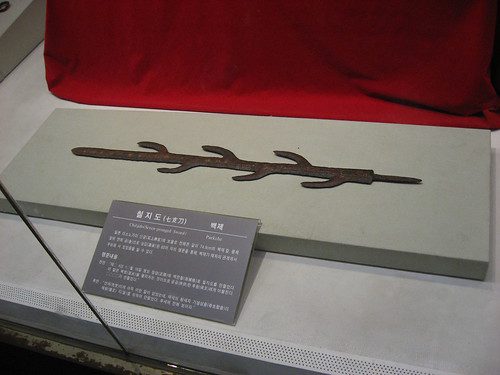
The chiljido or seven-branched sword, is believed to be King Geunchogo of Baekje’s (reigned 346–375) gift to the emperor of Japan. With no known counterparts, it is designated a National Treasure in Japan.
Known for its unique design—three branches extending on both sides of the blade—it is believed that the people of Baekje designed the chiljido in the shape of a sacred tree, symbolizing Baekje as the center of the world.
An inscription on the blade suggests it was believed to ward off invasions, making it a symbolic gift for a vassal state.
6. Hwandudaedo (Ring-Pommel Sword)
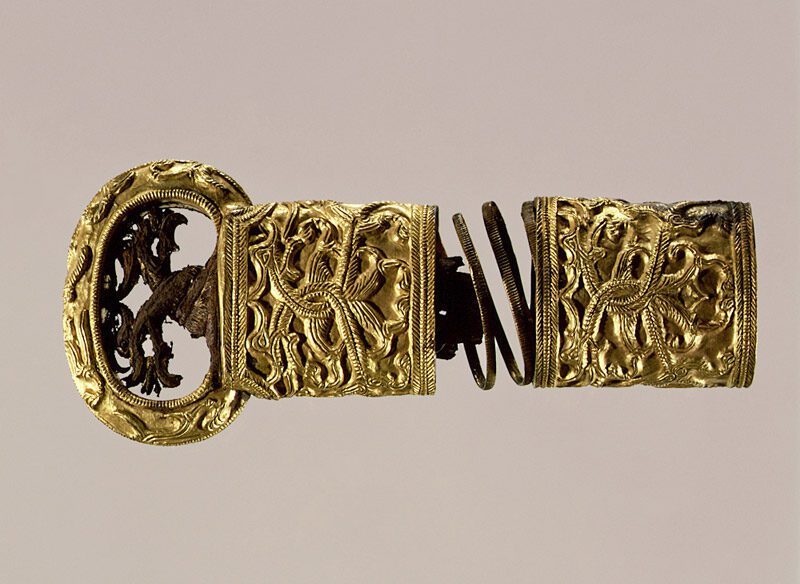
The Hwandudaedo (환두대도) is distinguished by its ring-shaped pommel (daedo), often adorned with intricate designs like phoenixes or dragons, which signified the owner’s status.
During that time, the dragon often symbolized political power. These swords are one of Korea’s earliest swords and are frequently found in tombs from the Three Kingdoms era.
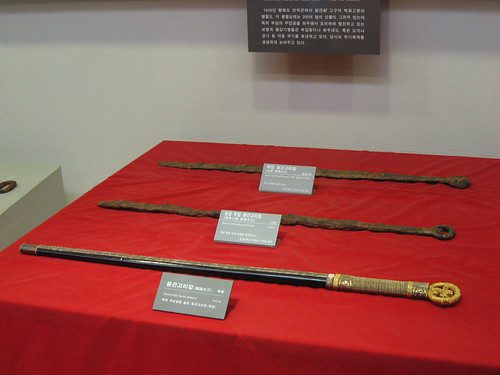
Hwandudaedo can be categorized based on their pommel decorations:
- Yongbong hwandudaedo – Baekje’s representative sword, features both dragon and phoenix motifs.
- Samyeop hwandudaedo – Adorned with a three-leaf design.
- Samru hwandudaedo – Distinguished by its triple-ringed pommel.
